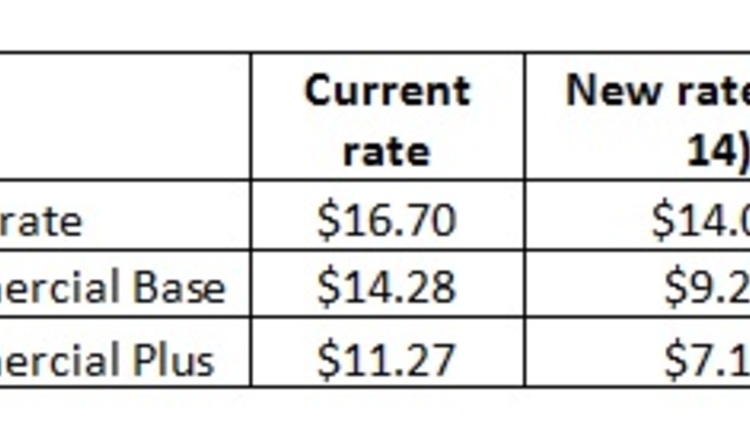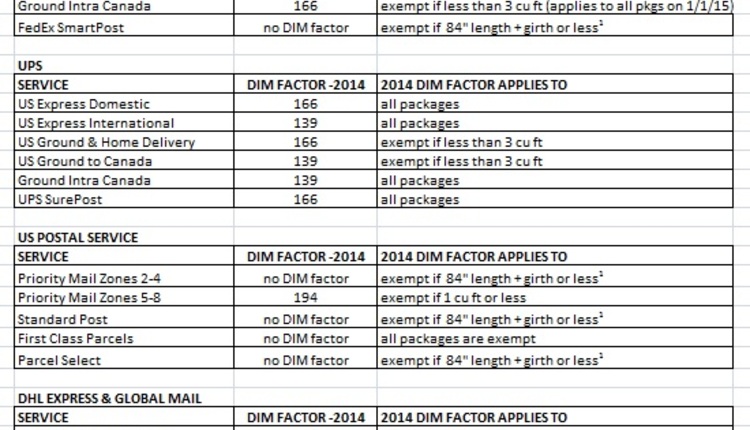As we go to press, the commercial small package carriers are announcing their new 2002 rates. And in their infinite wisdom, the carriers have deemed that you, the shipper, should benefit from these higher rates a full month earlier than last year. (Editor�s Note: Watch for the detailed analysis of the new rates in our March issue.)
While these higher rates are bad enough considering the state of the economy, the devil is truly in the details. Several new so-called �accessorial� charges are in the works, and some current accessorial charges are doubling in cost. Particularly hard hit will be shippers with good discounts, since surcharges are charged at list rates, regardless of the discounts. This will be an extra heavy burden for catalog and Web shippers who ship to residences. Adding in these new charges, the overall cost of some residential air shipments to rural addresses are increasing more than 40%. However, there are concrete steps you can take to help reduce some of these new charges.
Residential Surcharges
Residential surcharges on ground packages have been around for several years, but you�re about to be hit with a new twist: For the first time ever, you�ll pay a residential surcharge for air packages as well. UPS was first out of the box with this one, with FedEx and Airborne quickly following suit.
What you can do: Analyze your shipping addresses with the new Residential Indicator File (RIF) from the U.S. Postal Service. Customers have long needed a way to accurately determine if addresses are residential or commercial before shipping. The new RIF fits the bill perfectly by indicating whether any of the 135 million plus addresses in the US andPuerto Rico are residential or commercial. Another benefit is that you will no longer need to take your carrier�s word that a specific address is subject to a residential surcharge. (RIF is in beta test and is scheduled to be available commercially by the time you read this.)
Once you�ve identified your residential customers, consider switching to a service that does not charge a residential penalty such as Priority Mail or Parcel Select, which is available from a number of package consolidators. Compare the carriers � not all residential charges are equal. The new UPS charge is $1.10 (up a nickel from 2001), FedEx Ground and Express are $1.35 (also up five cents), FedEx Home Delivery matches UPS at $1.10, and Airborne rounds out the picture at $1.25 for air as well as its new Ground Delivery Service.
Delivery Area Surcharges
Delivery area surcharges on residential deliveries in rural areas have been applied to ground packages for a while. However, FedEx started applying this charge to air packages last April. Not to be outdone, UPS and Airborne have announced they will also apply the delivery area surcharge to air packages. Airborne, FedEx and UPS all charge $1.50, which is the same as last year. And these new surcharges don�t just apply to a few out-of-the-way areas � the UPS list contains 24,497 Zip codes, more than 57% of the total Zip codes in the US! The FedEx list is slightly smaller at 17,327 Zip codes, which is nearly 41% of the total Zip codes.
What you can do: Compare the carriers. Each carrier has a different list of Zip codes that qualify. You can download the Zip codes from the carriers� Web sites. You may be surprised by the number of medium-sized cities considered rural by the carriers. Keep in mind that Priority and Parcel Select shipments do not pay the delivery area surcharge.
Fuel Surcharges
The good news is that fuel surcharges, which were as high as four percent last fall, are coming down rapidly. The bad news is that these so-called �temporary� fuel surcharges that the carriers instituted in 1999 are now permanent for all intents and purposes. FedEx, UPS and Airborne have all announced plans to tie the surcharges to various wholesale fuel indexes.
What you can do: Again, compare the carriers. At press time, the UPS fuel surcharge was 0.75% for air and ground packages, while FedEx was charging one percent for air and 0.75% for ground shipments. Airborne was charging 2.9% for air (nearly four times the UPS charge) and one percent for ground. Depending on the carrier, you may save on fuel surcharges by shifting some shipments from air to ground. And since the carriers have all improved their ground transit times, your packages could get there just as quickly by ground as by air. For instance, a 10-pound, zone 4 package shipped via Airborne 2 Day Air is $16.40, while the same package that is shipped via ground would be just $5.09. And the fuel surcharge for air is 48�, while the surcharge for ground is only five cents. You can download time-in-transit maps from the carriers� Web sites.
Address Corrections
For 2002, the carriers are holding the line on these fees at $10 for air corrections and $5 for ground corrections. For many customers, this is the single biggest add-on charge on each week�s bill.
What you can do: When you do get a correction from a carrier, update your �ship to� address database right away, before you ship more packages to that same bad address. Clean up your addresses with coding accuracy support system (CASS) software before you ship. A recent study found that CASS can fix more than half of so-called �bad� shipping addresses. CASS was designed to clean up mailing lists, but there is no reason why you can�t also use it to improve your shipping addresses. This product is licensed by the Postal Service to a number of software vendors. Your mailing department may already have CASS software.
Did you know the UPS pays the Postal Service just 20� for an address change, and then it turns around and charges you $5 to $10? If you�re sending invoices or catalogs to your customers, you can sign up for Address Change Service from the Postal Service and get your corrections electronically for 20� each before you ship.
Missing and Invalid Account Numbers
The charges for missing and invalid account numbers are doubling to $10 in 2002. These errors usually occur when customers incorrectly fill out blank airbills.
What you can do: Order airbills from your carrier that are preprinted with your account number. If you can�t get these airbills right away, fill in the account number before distributing them within your company. Monitor your invoices for this and other shipping errors.
The Bottom Line
As you can see, there are a number of ways to counter these new and increased charges. In fact, by reducing service levels where possible, being creative and tightening up your internal processes, you can save money despite the current increases.
Doug Caldwell is the senior pricing analyst at AFMS Transportation Management Group. AFMS is comprised of former transportation and sales managers from the industry that specialize in helping their clients improve their freight programs. For more information, please visit www.afms.com or call 800-246-3521.








